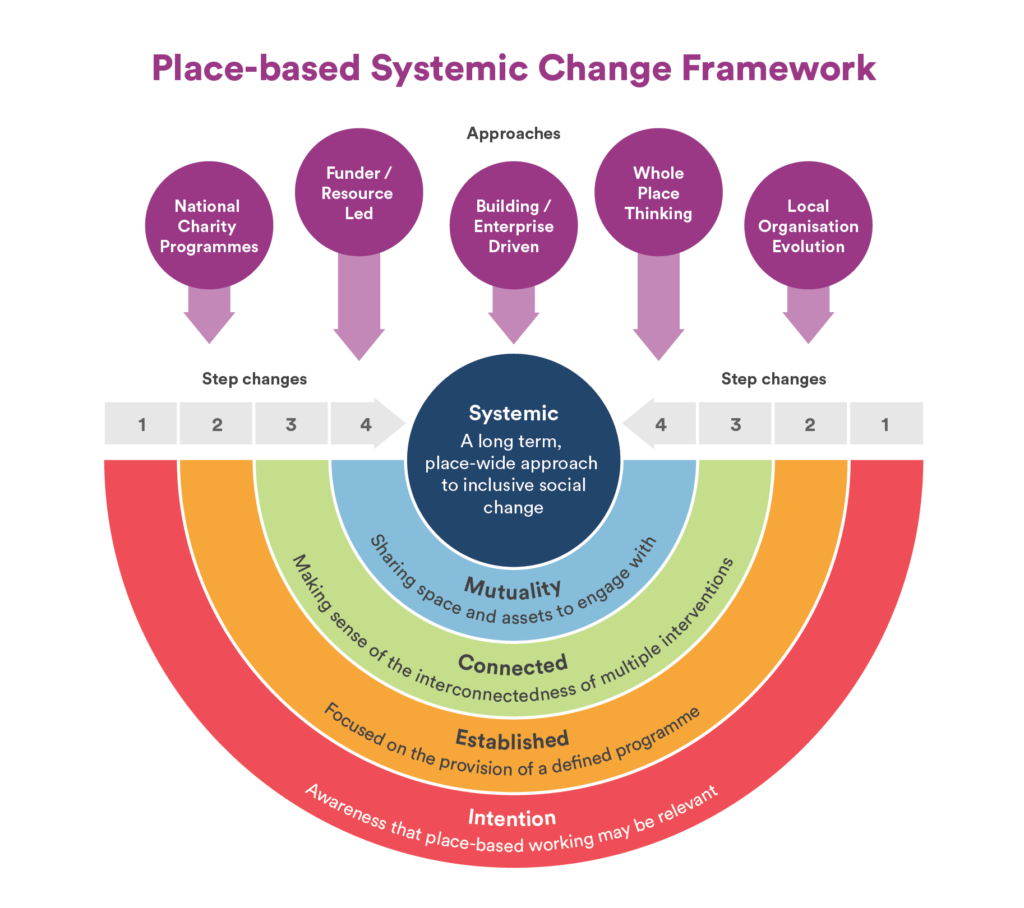Funders invited to test practical tools for place-based systemic change
John Hitchin describes the scenarios and issues that move people to begin to work differently and invites funders to test some practical tools to help places and organisations move towards systemic change in a place.
At Renaisi we talk and write about place a lot. We have worked in neighbourhoods and places for years, we have tried to define it, categorise it, and support lots of places and organisations to learn within it.
Recently we led an enquiry into ‘place-based systemic change’ with support from Save the Children UK and a steering group of charities and funders. We created a framework for thinking, acting and funding in a way that uses place as the vehicle for social change, with long-term, systemic change being the outcome.

John Hitchin will be presenting the learning from the Funding Place-Based Systemic Change project with the chair of the project steering group, Natsayi Sithole of Save the Children UK and Stephen Skeet from Volunteering Matters online at 12.30-2pm on 4th November. Register here.
What is place-based systemic change?
We define place-based systemic change as an approach to social change, rather than an outcome of it, that is defined by focus, time horizon, approach, scale and intentionality.
What’s interesting when you start to look across the areas where work of this kind is happening, is that there tends to be a set of issues which encourage them to start a new or different way of working. These triggers include, but are not limited to, things like siloed local bureaucracies, good things slipping through the gaps, valuing process over relationships and an inequity of outcomes.
When organisations or individuals repeatedly butt up against these issues it can lead to a malaise, or it can ignite a desire for a different way of working and thinking about social change. What then happens is funders, commissioners, providers, and communities need to get together to think differently about how to make change happen in their area.
Why is place-based systemic change hard to fund?
In the second learning paper we highlighted the sorts of issues that can make it hard to fund in a place based and systemic way. You can find that paper here, but a short list of questions for funders to think about is:
- Strategy – how does place fit with your ambitions and strategy?
- Place – which places are you thinking about and why?
- Role – what role do you want to take on?
- Partnership – who are you going to work with and how? (there should be no heroes here)
Once you’ve started to explore these questions, then we believe our framework can really help with both the language of change, and the thinking about the needs of the place, and how it can move on.
In our research we found that funders were taking on different roles (the convenor, the instigator the holder of ambition), but our work on developing the framework highlighted types or changes in practice that could be invested in and are important to consider. These ‘step-changes’ moved places and organisations towards more systemic practice.
Get involved
We think this is an important conversation and we’re interested in talking to funders about testing some practical tools that help places and organisations move through the steps in the framework.
John Hitchin will be presenting the learning from the Funding Place-Based Systemic Change project with the chair of the project steering group, Natsayi Sithole of Save the Children UK and Stephen Skeet from Volunteering Matters online at 12.30-2pm on 4th November.

